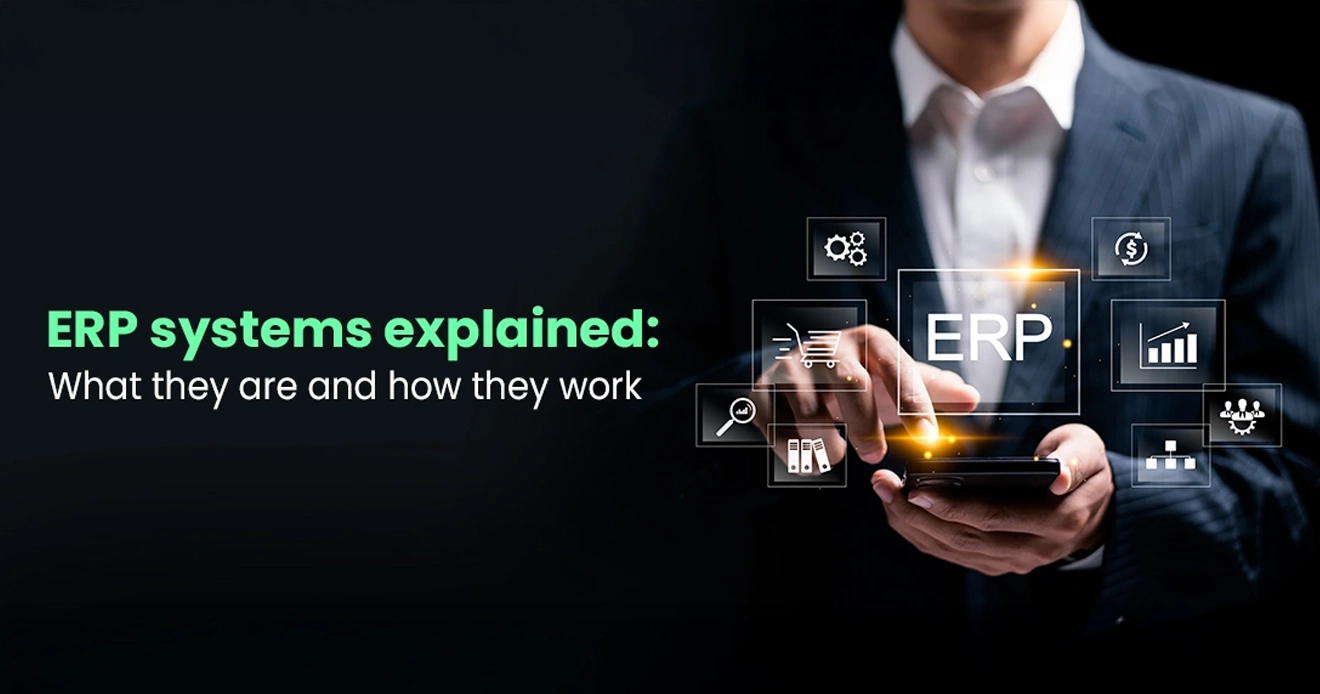Organisations need help coordinating between finance, human resources, supply chain and other essential functions. Disconnected systems and processes can lead to inefficiencies, errors and poor decision-making. This is when an Enterprise Resource Planning (ERP) system comes into play.
An ERP system serves as the backbone for managing a company’s resources, ensuring that all parts of the business are aligned and working towards common goals. But exactly what is an ERP system, and how does it work?
In this blog, explore the details of ERP systems, their components, and the mechanics behind their operation. Learn how they can transform businesses and drive efficiency.
What is an ERP system?
To answer the question of what is an ERP system, you must understand that an ERP system is an integrated software platform. Organisations use it to manage and automate many back-office functions.
These functions are related to technology, services, and human resources. It combines various business processes into a single, unified system, allowing the smooth flow of information across different departments. This integration helps organisations to standardise their processes, enhance accuracy and increase productivity.
Core components of an ERP system
Some of the crucial components of an ERP system are:
- Finance and accounting: This module helps in managing financial transactions, like accounts payable/ accounts receivable, general ledger, and fixed assets. It ensures compliance with standards of accounting and provides real-time financial insights.
- Human Resources (HR): The HR module manages employee information, payroll, recruitment, benefits, performance evaluation, and training. It helps streamline HR processes and enhances employee management.
- Supply Chain Management (SCM): This module handles the procurement of raw materials, inventory management, order processing, and logistics. It helps optimise supply chain operations and reduce expenses.
- Manufacturing: (SCM): The manufacturing module manages production planning, scheduling, quality control, and product lifecycle management. It improves production efficiency and ensures product quality.
- Customer Relationship Management (CRM): The CRM focuses on managing interactions with customers, sales, marketing, and customer service. It helps improve customer satisfaction and loyalty.
- Sales and marketing: This module supports sales order processing, pricing, quotations, and marketing campaigns. It increases the sales efficiency and market reach.
- Project management: The project management module plans, executes, and monitors projects. It ensures that projects are completed on time and within budget.
How does an ERP system work?
An ERP system works by integrating various business processes into a single, unified platform. Here’s a step-by-step explanation of how it functions:
- Data collection and input: The process starts with the collection and input of data from various departments. This data is entered into the ERP system through user interfaces, automated data capture, or integration with other systems.
- Data integration: Once the data is collected, the ERP system incorporates it into a centralised database.
- Process automation: The ERP system operates various routine tasks and processes. Such as, when a sales order is made, the system can update inventory levels, generate invoices, and schedule deliveries.
- Workflow management: ERP systems include workflow management tools that assist in streamlining business processes. These tools can automate approvals, track progress and ensure that tasks are completed on time.
- Reporting and analytics: These reports offer valuable insights into business performance and help in decision-making.
- Collaboration and communication: ERP systems facilitate better collaboration and communication among departments. By providing a single source of information, they minimise misunderstandings and improve teamwork.
- Scalability and flexibility: Modern ERP systems are scalable and flexible. They can grow with the organisation and transform according to changing business needs.
Advantages of using an ERP system
Implementing an ERP system provides several advantages to organisations. Here are some of the key benefits:
- Improved efficiency: Automating routine tasks and processes, ERP systems lower manual effort and increase efficiency.
- Enhanced data accuracy: Centralised data storage ensures that information is consistent and accurate, minimising the risk of errors.
- Better decision-making: Actual-time reporting and analytics provide valuable insights that support informed decision-making.
- Cost savings: ERP systems help in reducing operational costs by optimising resource utilisation and enhancing process efficiency.
- Scalability: ERP systems progress with the organisation, making it convenient to add new users, functions, and modules as required.
- Regulatory compliance: ERP systems help organisations comply with industry regulations and standards by offering accurate and timely information.
- Customer satisfaction: By improving processes and information flow, ERP systems improve customer service and satisfaction.
Best practices for implementing an ERP system
To ensure a successful ERP implementation, you should follow these best practices:
- Thorough planning: Build a detailed implementation plan that outlines the scope, timeline, and resources required.
- Stakeholder engagement: Involve key stakeholders from all departments to make sure that their needs and concerns are addressed.
- Clear objectives: Define clear objectives and achievement criteria for the ERP implementation.
- Training and support: Provide comprehensive training and support to employees to help them adapt to the new system.
- Data quality: Ensure that data is accurate and consistent before transferring it to the new system.
- Continuous improvement: Regularly review and optimise the ERP system to make sure it continues to meet business needs.
Transform your operations with ERP
Incorporating an ERP system can be transformative for your business. By integrating various business processes into a single, cohesive platform, the ERP system improves efficiency, accuracy, and decision-making. The core components of an ERP system, like finance, HR, supply chain management, and CRM, work together to streamline operations and lower expenses.
ERP systems are crucial for modern businesses because they provide enhanced data accuracy, scalability, and regulatory compliance. Therefore, following best practices during implementation ensures a smooth transition and maximises the ERP system’s benefits.

